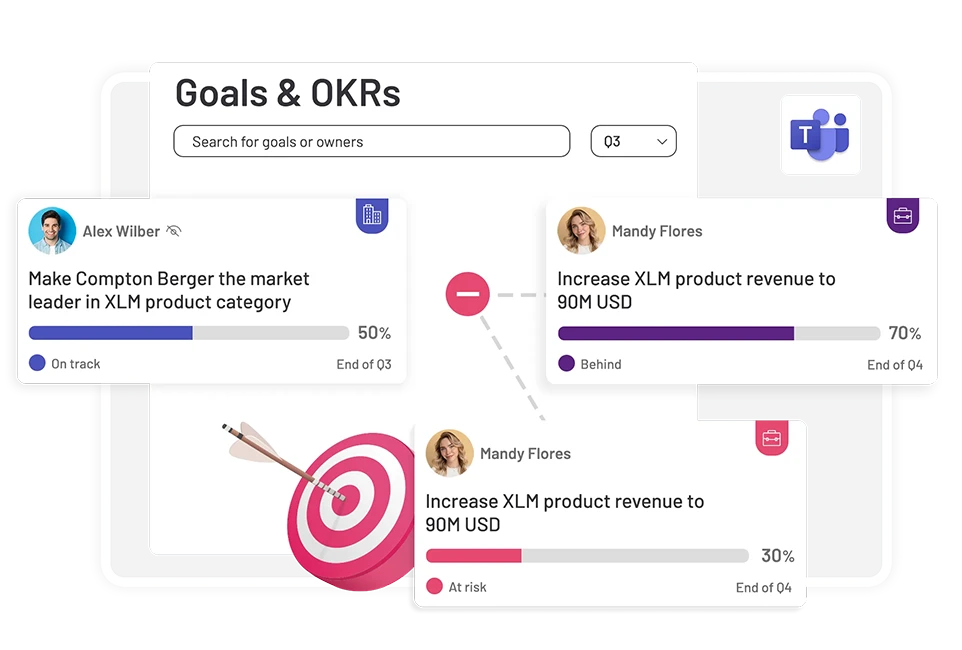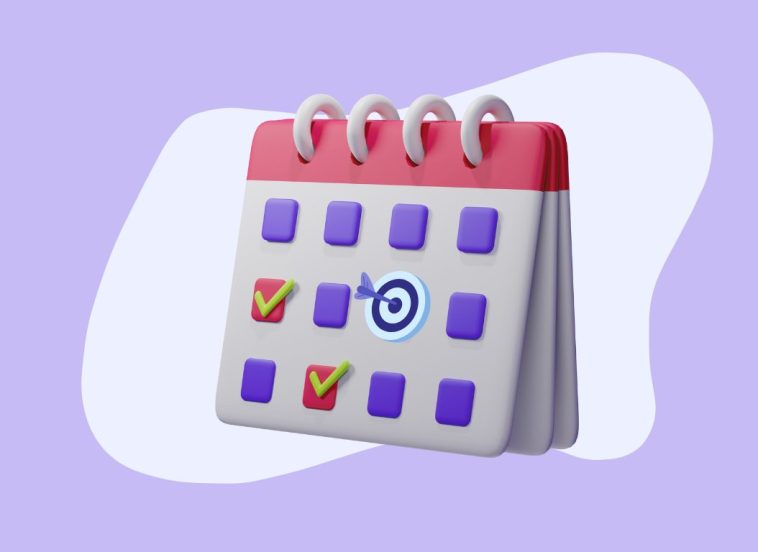The end of the quarter is fast approaching and you know what that means!
Performance review goals!
For the reviewees, this means that all those quarterly performance review goals are coming up!
For people leaders, it means the time to set some new quarterly performance review goals.
Of course, not every organization needs to follow the same performance review frequency.
That is why in this article we included performance review examples such as:
- Quarterly Performance Review Goal Examples.
- Mid Year Performance Review Goal Examples.
- Annual Performance Review Goal Examples.
Finding review goal examples may not be enough. In this article, we will also show you how you can integrate the goals you set in the review period, into your performance review templates. All you have to do is to keep scrolling!
Table of Contents
What To Consider When Setting Performance Review Goals?
The most important thing to consider while setting performance review goals is to make sure those goals are aligned with your organizational strategy.
The best way to ensure goal alignment in performance review goals is to use the SMART criteria while setting your goals.
A performance review goal that fits the SMART goal criteria has to be:
Specific: Goals should be clear and specific to avoid ambiguity.
Measurable: Define Metrics! Each goal should have clear metrics or indicators for measuring progress and achievement.
Achievable: Set goals that are challenging yet achievable. Unrealistic goals can demotivate employees, while too-easy goals may not push them to perform at their best.
Relevant: Goals should be relevant to the employee’s role and responsibilities. They should also consider the employee’s career aspirations and personal development plans.
Time-Bound: Each goal should have a clear timeline or deadline.
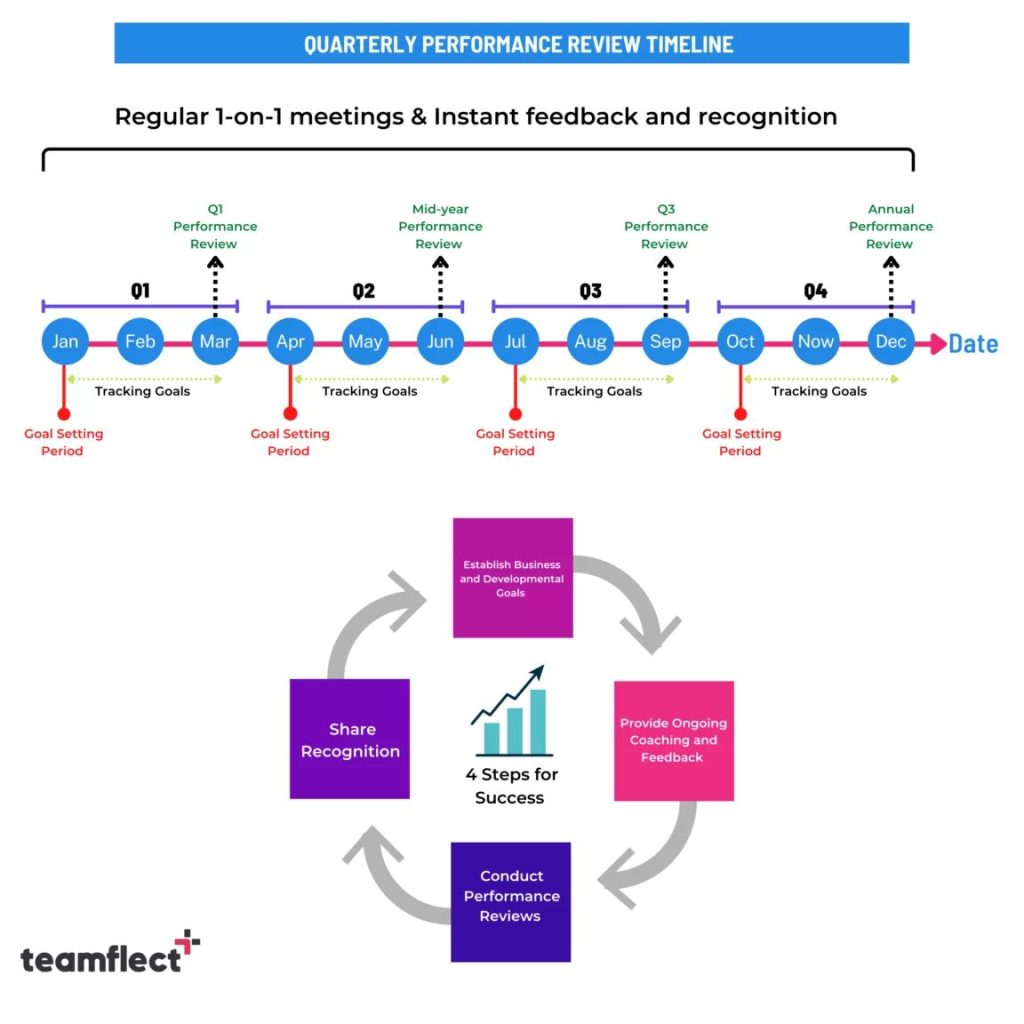
Quarterly Performance Review Goal Examples
Quarterly Goal Example 1: Increase Customer Satisfaction Scores
Aim to increase customer satisfaction scores by 10% by the end of the quarter through enhanced service protocols and staff training.
What makes it a SMART goal?
This goal is specific to customer service, measurable via scores, achievable with focused efforts, relevant to business success, and time-bound within the quarter.
Quarterly Goal Example 2: Reduce Project Delivery Times
Target a 15% reduction in average project delivery times by streamlining processes and implementing agile methodologies within the next three months.
What makes it a SMART goal?
This goal focuses on efficiency, is measurable through delivery times, is achievable with process improvements, is relevant to operational success, and is confined to the quarterly timeline.
Quarterly Goal Example 3: Enhance Team Skill Set
Commit to upskilling the team by having each member complete a relevant professional development course by quarter-end.
What makes it a SMART goal?
This goal is specific to skill enhancement, measurable by course completion, achievable with scheduled training, relevant to team capability, and time-bound within the quarter.
Quarterly Goal Example 4: Improve Internal Communication
Launch and adopt a new internal communication tool aiming for at least 90% staff engagement rate by the quarter’s end to foster better collaboration and information sharing.
What makes it a SMART goal?
This goal is specific to communication improvement, measurable by engagement rates, achievable with the right tool and encouragement, relevant to operational efficiency, and time-bound.
Quarterly Goal Example 5: Boost Sales Figures
Increase sales figures by 20% over the next quarter through strategic marketing campaigns and expanding the sales team.
What makes it a SMART goal?
This goal is specific to sales performance, measurable by sales data, achievable with targeted efforts, relevant to business growth, and time-bound to the quarterly review period.
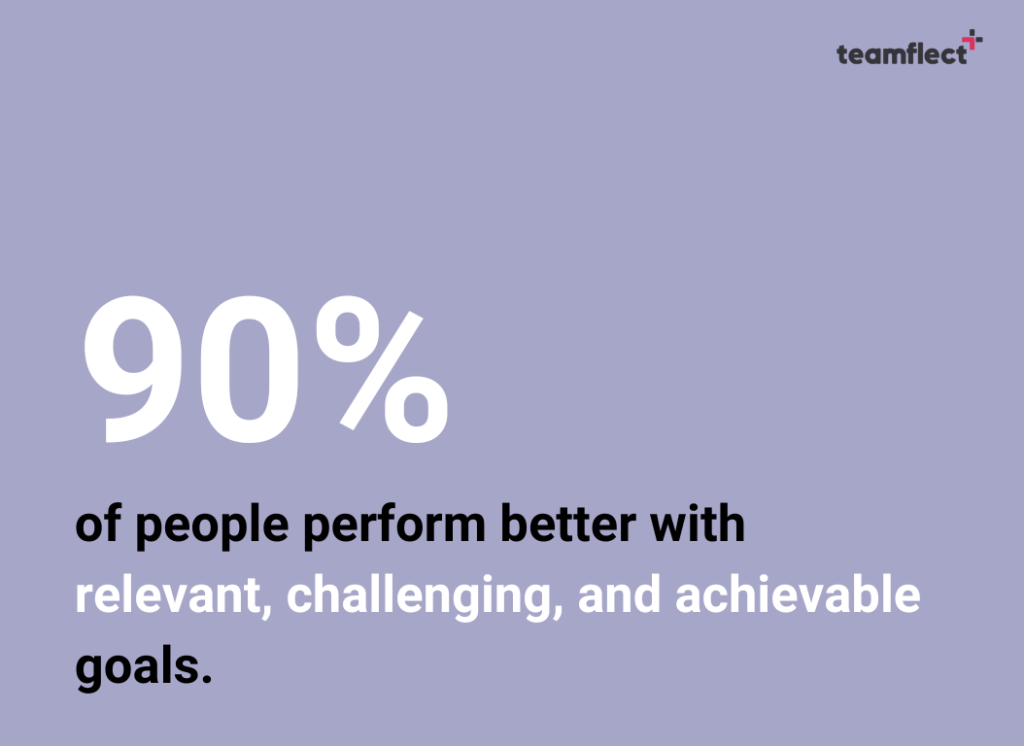
Mid Year Performance Review Goal Examples
Mid Year Goal Example 1: Expand Market Reach
Aim to enter two new geographic markets by the mid-year, leveraging market research and targeted marketing strategies.
What makes it a SMART goal?
This goal is specific to market expansion, measurable by entry into new markets, achievable with focused market analysis and strategy implementation, relevant to business growth, and time-bound by the mid-year checkpoint.
Mid Year Goal Example 2: Increase Product Line
Develop and launch a new product line by the mid-year review, based on customer feedback and market demand analysis.
What makes it a SMART goal?
This goal is specific to product development, measurable by the successful launch of the new line, achievable with dedicated resources, relevant to meeting customer needs, and time-bound to the mid-year timeline.
Reduce operational costs by 10% by the mid-year through process optimization and waste reduction initiatives.
What makes it a SMART goal?
This goal is specific to cost reduction, measurable by expense records, achievable with efficiency improvements, relevant to financial health, and time-bound to the mid-year mark.
Mid Year Goal Example 4: Enhance Employee Satisfaction
Increase employee satisfaction scores by 15% by conducting monthly feedback sessions and implementing at least two major feedback points by the mid-year.
What makes it a SMART goal?
This goal is specific to employee engagement, measurable by satisfaction surveys, achievable with responsive actions, relevant to organizational culture, and time-bound.
Mid Year Goal Example 5: Strengthen Leadership Skills
For leadership roles, complete a leadership development program and mentor two junior employees by the mid-year.
What makes it a SMART goal?
This goal is specific to leadership development, measurable by program completion and mentorship, achievable with commitment, relevant to personal and organizational growth, and time-bound by the mid-year review.
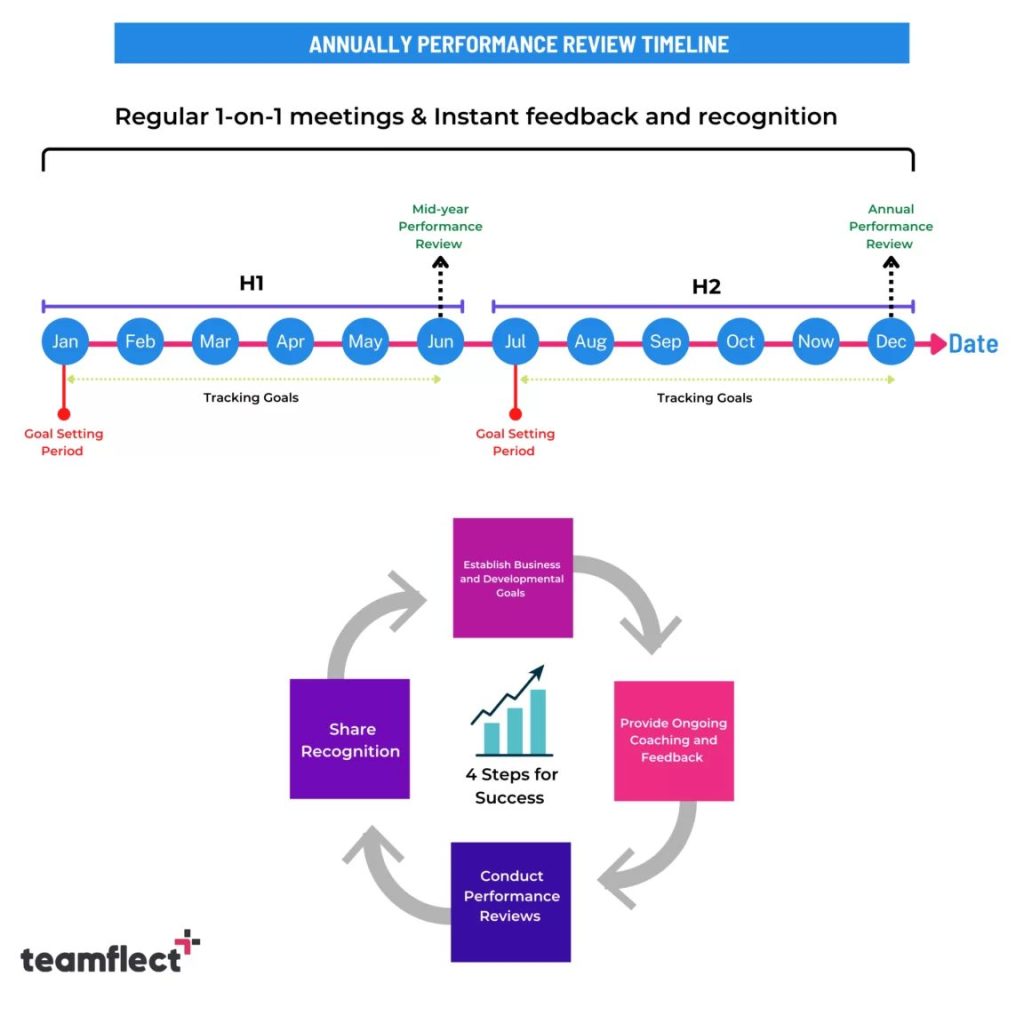
Annual Performance Review Goal Examples
Annual Goal Example 1: Achieve Revenue Targets
Increase annual revenue by 25% through strategic client acquisition and retention efforts. This goal is specific to revenue growth, measurable by financial performance, achievable with an aggressive sales and marketing strategy, relevant to the company’s overall success, and time-bound within the fiscal year.
Annual Goal Example 2: Complete Major Project
Successfully complete the flagship project by year-end, meeting all predefined milestones and staying within the budget.
What makes it a SMART goal?
This goal is specific to project management, measurable by project milestones and budget adherence, achievable with effective project oversight, relevant to company objectives, and time-bound to the annual cycle.
Annual Goal Example 3: Corporate Social Responsibility Initiative
Launch and sustain a CSR initiative that aligns with company values and achieves at least 80% employee participation by year-end.
What makes it a SMART goal?
This goal is specific to social responsibility, measurable by participation rates, achievable with engaging initiatives, relevant to company ethos, and time-bound within the year.
Annual Goal Example 4: Customer Base Growth
Grow the customer base by 30% by the end of the year through new acquisition channels and improving customer retention rates.
What makes it a SMART goal?
This goal is specific to customer growth, measurable by customer data, achievable with marketing and service improvements, relevant to business expansion, and time-bound to the year-end.
Annual Goal Example 5: Professional Development for Staff
Implement a comprehensive professional development program for all staff, aiming for 100% participation and at least one completed course per employee by year-end.
What makes it a SMART goal?
This goal is specific to staff development, measurable by participation and course completion, achievable with a structured program, relevant to enhancing capabilities, and time-bound within the annual review cycle.
How To Set & Track Goals In Microsoft Teams
Whether you are setting goals for quarterly, mid-year, or annual performance reviews, keeping them integrated into your day-to-day operations is always the best idea.
That is why you need goal-setting software that integrates with the main communication platform that your team uses every day.
Since Microsoft Teams is the best collaboration platform for remote or conventional teams, let us show you just how you can integrate performance review goals into your Microsoft Teams account.
Step 1: Choose Goal Management Software

The right goal-setting software for each organization is different. You can pick the one for you by visiting this particular list: Top Free OKR Software.
That being said if your organization uses Microsoft Teams regularly, then the best option for you would be Teamflect.
Just head over to the Teams App Store and search for Teamflect.
Step 2: Start Setting Goals
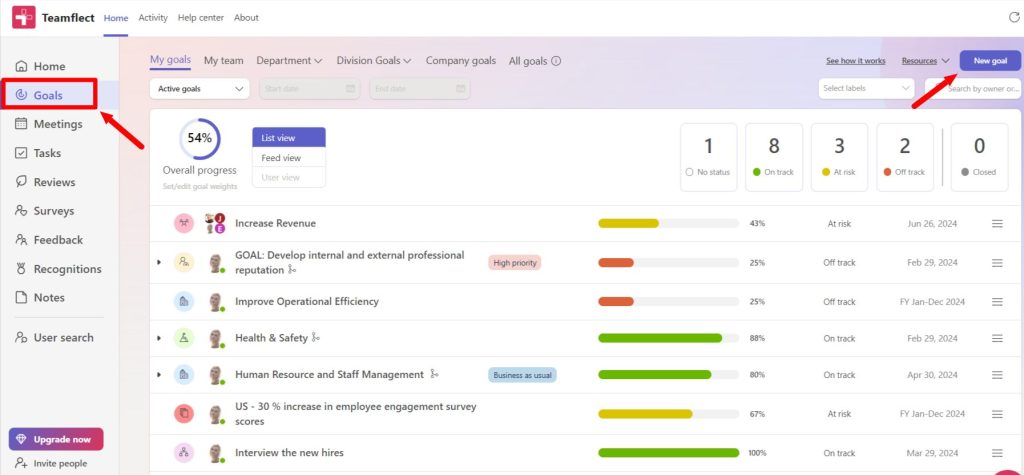
Once Teamflect is a part of your Microsoft Teams, simply click “Goals” on the left side bar to access the “Goals” module.
This is your organizational hub for all your individual, departmental, and company goals. Track everyone’s goals with ease, and have an even easier time setting new goals.
All you have to do is click “New Goal”.
Step 3: Create New Goals
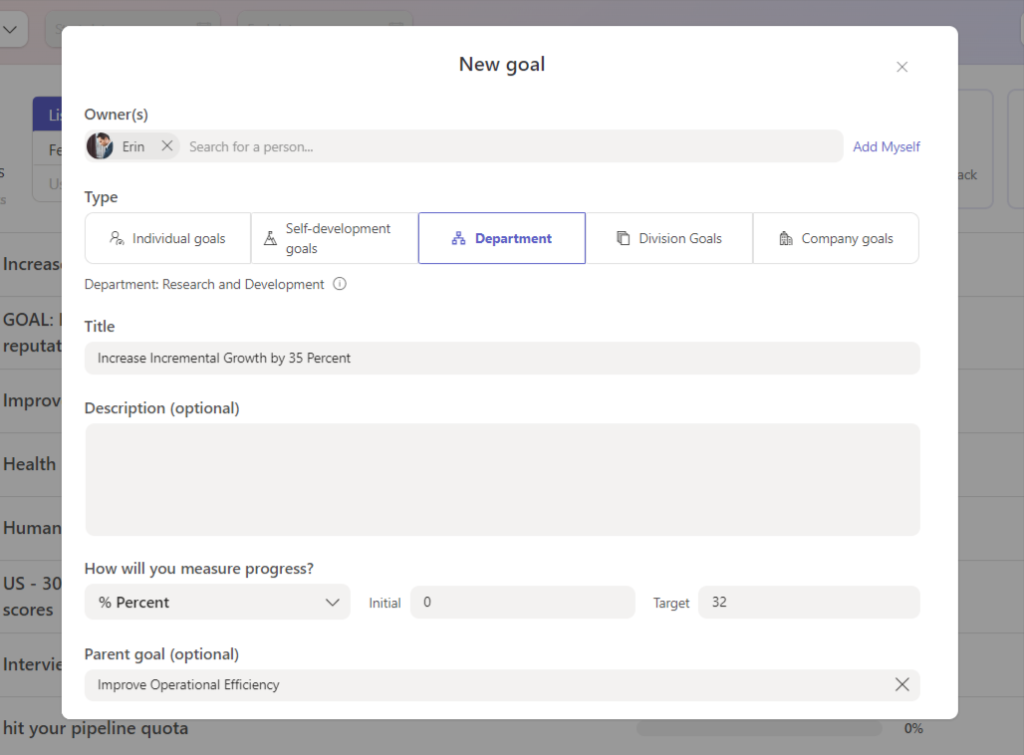
You will have plenty of different options while customizing the goals you are setting.
You can create custom goal types such as: Individual, Departmental, Company, or Self Development Goals.
You can create your won goal completion criteria.
Align the goal with parent goals for a cascading structure.
Create tasks related to the goal.
Assign custom priority labels.
And do so much more!
Step 3: Integrate Goals into Performance Reviews
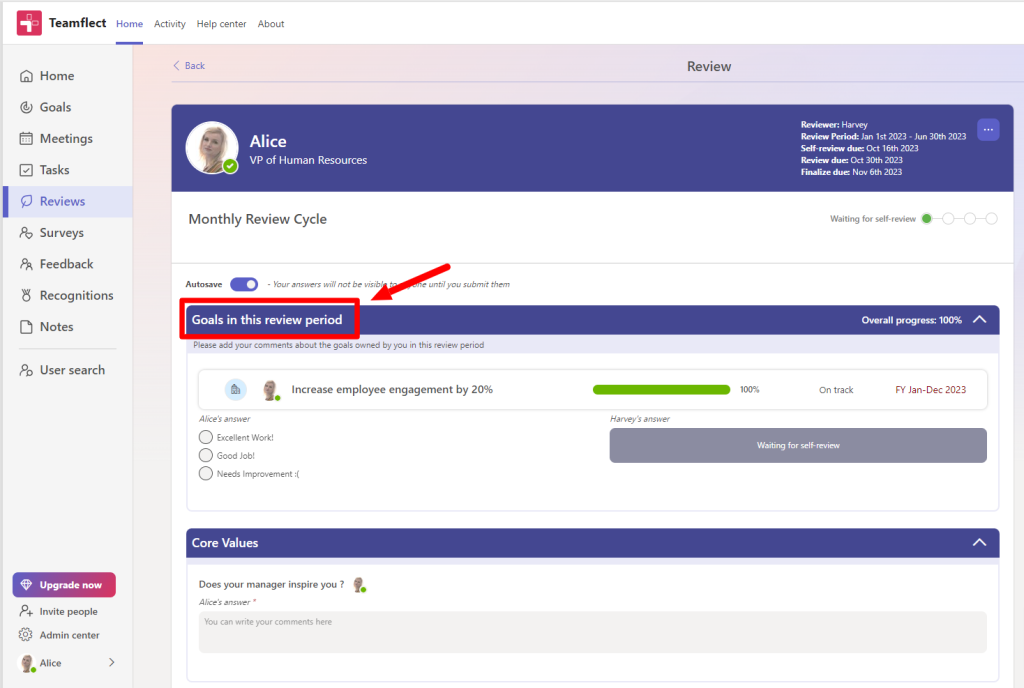
When it comes time to conduct performance reviews, you can choose to integrate all the goals the reviewee owned within the review period and evaluate goal performance.
You also have the option to create employee development goals at the end of reviews and build a development plan.
Bonus: Automated Goal Check-ins
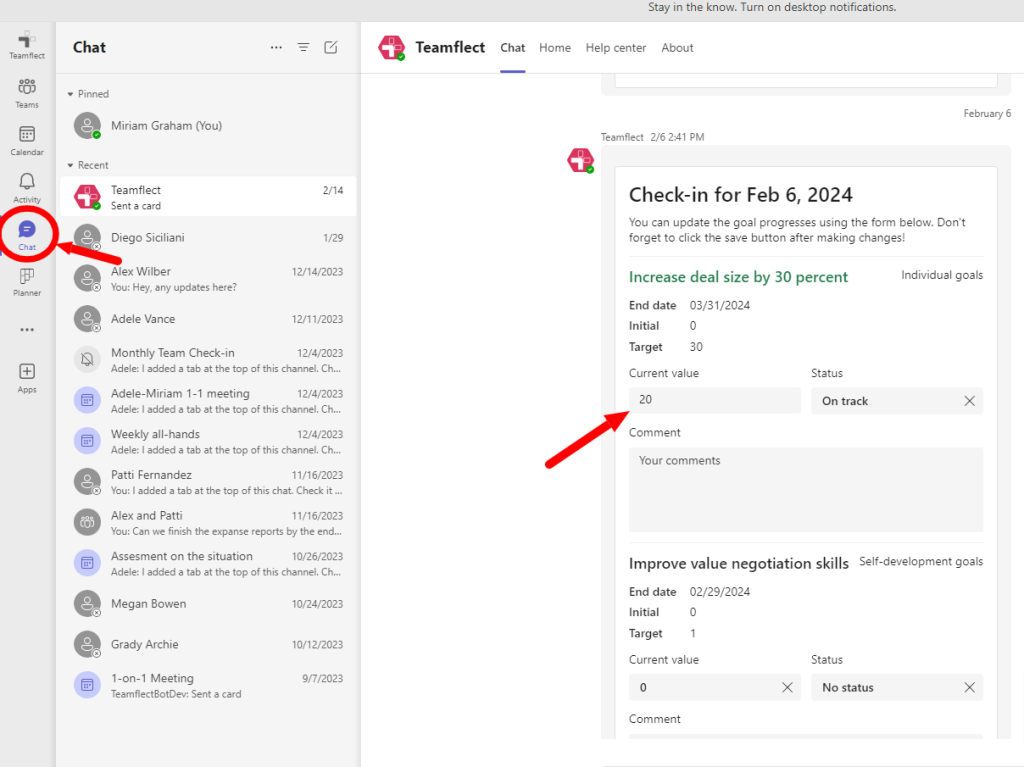
Goal owners receive automated goal update notifications through Microsoft Teams chat to update their goals, increasing goal ownership!
